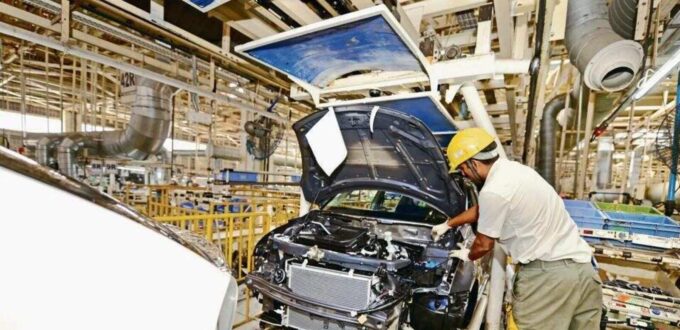India’s manufacturing activity recovered slightly in September, from a slowdown in growth within the previous month of August as strengthening demand conditions amid the easing of COVID-19 restrictions boosted sales.
According to the monthly IHS Markit India Manufacturing Purchasing Managers’ Index (PMI) survey released on October 1, manufacturing PMI stood at 53.7 in September, up from 52.3 in August.
As a results of both domestic sales and international exports rising , firms scaled up production and purchased additional inputs in September.
In the previous month, the index fell below the critical 50.0 mark for the primary time since July 2020. In PMI parlance, a print above 50 means expansion while a score below 50 denotes contraction.
After starting 2021 on a stronger footing than it ended 2020, the manufacturing sector has continued to see-saw between rising and suddenly losing growth momentum. As a result, PMI has been volatile throughout 2021, recovering to 55.3 in July after June’s fall to 48.1 from 50.8 in May.
While production, new orders and input buying have continued to expand, but growth has stagnated. the newest rise offers hope as output, new orders, exports, quantity of purchases and input stocks all strengthened.
Consumer goods was the brightest spot in September, posting the very best PMI reading of the three monitored market groups amid substantial accelerations in growth of latest orders and output. Aggregate manufacturing production in India rose for the third straight month in September, and at a faster pace than that recorded in August, the survey showed. Wherever growth was reported, panel members cited favourable market conditions and improved sales volumes.
September data highlighted little change to manufacturing sector employment during September, as many firms reported the compliance of state guidelines surrounding shift work. The survey showed that manufacturing jobs had increased after a niche of 15 months in July.
“Indian manufacturers lifted production to a greater extent in September as they ready for improvements in demand and therefore the replenishment of stocks. There was a considerable pick-up in intakes of latest work, with some contribution from international markets,” Pollyanna De Lima, Economics Associate Director at IHS Markit and author of the report, said.
Should the pandemic still recede, IHS Markit expects a 9.7 percent annual increase in industrial production for civil year 2021.
However, after subsiding in each of the previous two months, cost inflationary pressures intensified in September. Strong demand for scarce products contributed to the rise in input costs, as did rising fuel and transportation rates, De Lima said.
Rising fuel, staple and transportation prices pushed the general rate of input cost inflation to a five-month high. Output prices, however, increased at a slower and only moderate rate


No Comments Yet